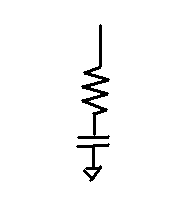Ravinder487
Full Member level 3

- Joined
- Jul 9, 2010
- Messages
- 169
- Helped
- 0
- Reputation
- 0
- Reaction score
- 0
- Trophy points
- 1,296
- Location
- Bangalore, India
- Activity points
- 2,469
I've very basic question regarding compensation of OPAMPS.In CMOS Analog Circuit design by Allen & Holberg it was given that if RHP zero is ten times greater than GB then it doesn't effect OPAMP stability.In the next topic he explains how to control RHP zero.
My doubt is if we have satisfied first condition then what is the necessary of controlling zero location and if it is necessary then how can we know which method is to be used to control zero location as there are many methods listed in the book.
Thanks & Regards,
Ravinder Jakkidi
My doubt is if we have satisfied first condition then what is the necessary of controlling zero location and if it is necessary then how can we know which method is to be used to control zero location as there are many methods listed in the book.
Thanks & Regards,
Ravinder Jakkidi




